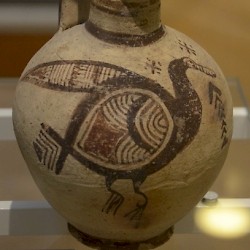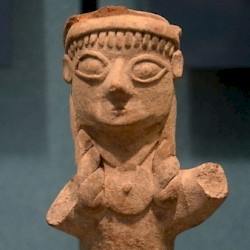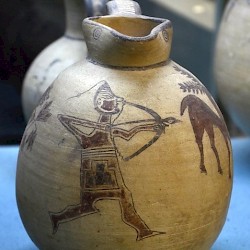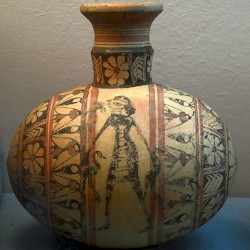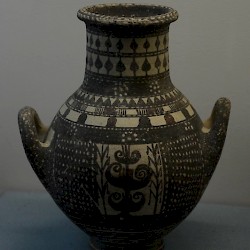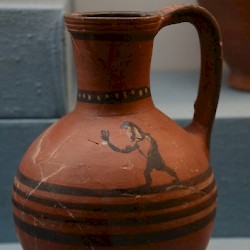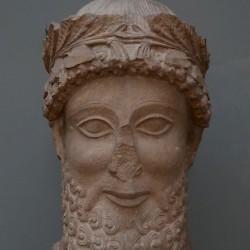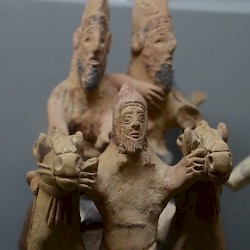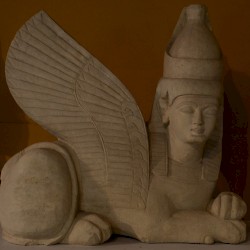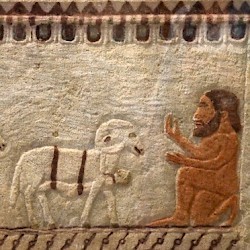Archaic Cyprus
Q2333703Cyprus (Greek Κύπρος): large island in the eastern Mediterranean, colonized by Phoenicians and Greeks.
Dark Age Colonization

In the Bronze Age, Cyprus had been inhabited by people who spoke a language that is usually called "Eteocypriot". As we have seen in the first part of this article, there had been trade contacts with the Mycenaean Greeks, who had come to settle on Cyprus after the demise of Mycenaean civilization. They brought a Peloponnesian dialect with them.
After the collapse of the Bronze Age system of interregional trade, the "Dark Ages" begin (c.1150-c.850). During these centuries, the three scripts of Cyprus were replaced by a fourth one, simply called "Cypriot". Derived from Cypro-Minoan-1 and resembling Linear-B, this was used to write both Greek and Eteocypriot, and remained in use well into the Hellenistic age.
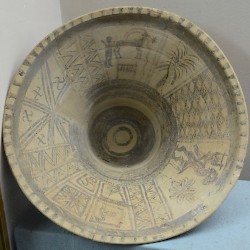 Cypro-Geometric I Pottery |
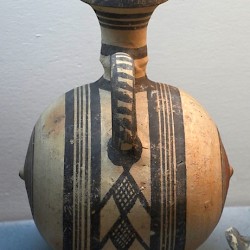 Cypro-Geometric Ii Pottery |
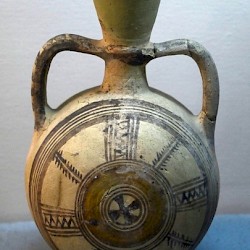 Cypro-Geometric Ii Pottery |
 Cypro-Geometric IIi Pottery |

Although the Dark Ages are no longer as obscure as they once have been, much is still poorly understood. However, it would seem that the Greek settlers laid the foundations of several towns that were to remain important for the next centuries. Unlike the cities of the Greek mainland, which were usually dominated by an aristocracy, the Cypriote city-states were ruled by kings. The cult of Aphrodite developed, with important sanctuaries in Old Paphos (on the west coast) and Golgoi (in the east).
In about 1050 BCE, at the beginning of the Iron Age (also known as "Cypro-Geometric", until c.700 BCE), a powerful earthquake destroyed the main Cypriote towns. Many of them were immediately rebuilt, but the people of Enkomi relocated to a new city in the neighborhood: Salamis, modern Famagusta, which was to become one of the most powerful city states on the island. Kition was temporarily abandoned as well.
Phoenicians, Assyrians, and Egyptians

When you are standing on the slopes of the Lebanon Mountains and the sun sets, you can, with a bit luck, recognize the mountains of Cyprus on the horizon: a thin black line on the horizon. It is easy to understand why the Phoenicians, who lived in Tyre, Sidon, Berytus, Byblos, and Aradus, were attracted to the island in the west, which was rich in copper mines and forest.
In about 820 BCE, the Tyrians took over the abandoned city of Kition, which rapidly became a crucial center of Phoenician civilization. Here, the goddess Astarte was venerated, the Levantine equivalent of Aphrodite. From Kition, the ships from Tyre and Sidon would continue to the west, to Sicily, to Carthage, and beyond. Cyprus now had a trading network to Egypt, Phoenicia, Greece, Italy, and the western Mediterranean. The importance of Kition may be deduced from the fact that in Hebrew, Kittim ("people from Kition") became the word to indicate all westerners, Cypriote or not. The Royal Tombs of Salamis document the wealth of Cyprus' ruling class.

In the ninth century, the Assyrian king Šalmaneser III expanded his power to what is now called Syria, and demanded tribute from the Phoenician cities. Later kings - a relief of Sargon II is known from Kition - would also force the western ports into paying large amounts of precious metals, which essentially meant that the Mediterranean trade network was exploited by Assyria. Cyprus was forced to send copper and wood. Perhaps it was in response to the Assyrian political and financial claims that the Cypriotes were very open to Egyptian cultural influences, which is shown in the archaeological phase after the "Cypro-Geometric" period, the "Cypro-Archaic" age (c.700-c.475 BCE).
From now, Cyprus was inhabited by Phoenicians, Greeks, and the descendants of the Eteocypriots, but the boundaries between these nations were not very clear. People could move and did live everywhere. Ethnicity did matter, however, to the government: whereas most cities were ruled by Greek-speaking dynasties, Kition had a Phoenician administration, while Amathus may have been ruled by an Eteocypriot dynasty. Ten kings "of the island of Jadnana" are mentioned in the Assyrian known as Esarhaddon's Prism B, 3.
Ekishtura, king of Edi’il;note Pilagura, king of Kitrusi;note Kisu, king of Sillu’ua;note Ituandar, king of Pappa;note Erisu, king of Silli;note Damasu, king of Kuri;note Atmesu, king of Tamesi;note Damusi, king of Qarti-hadasti;note Unasagusu, king of Lidir;note Bususu, king of Nuria.note
Salamis, Amathus, and Lapetos are missing, while Silli is unidentified.
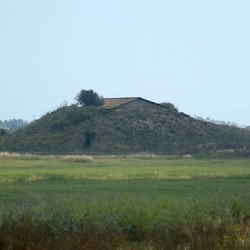 Salamis, Royal Tomb 3 |
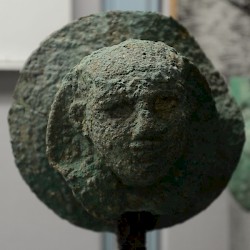 Salamis, Royal Tombs, Horse accessory |
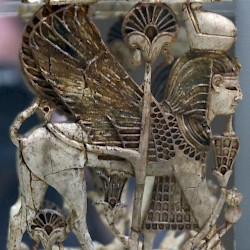 Salamis, Royal Tombs, Ivory |
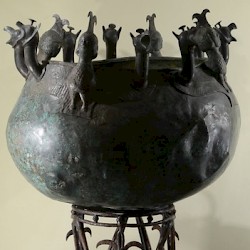 Salamis, Royal Tomb 79, Cauldron 1 |

The dynasts were ready to seize their independence again when the Assyrian Empire lost control of its periphery in the second half of the seventh century, and was in 612 BCE subdued by the Babylonians. The age of independence was not to last very long, however. Anticipating a Babylonian attack, the Egyptian king Amasis occupied Cyprus (c.560 BCE),note which allowed him to strike at the Phoenician ports and cut off Babylonian lines of communication in case of an attack on Egypt. Still, although the Cypriote kings recognized Egyptian hegemony, they remained in charge of their cities.
 Tamassos, Archaic helmet |
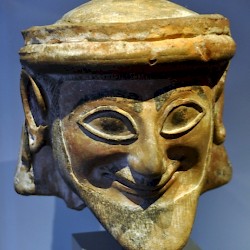 Idalion, archaic head |
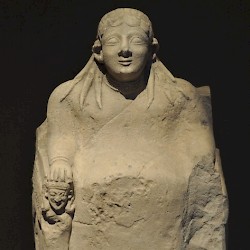 Cyprus, Archaic throne of Astarte |
 Idalion, late archaic statue of a man |
The Egyptian supremacy was not to last for a long time either. The Babylonian Empire was threatened by Iranian enemies from the east. In 539 BCE, the Persian king Cyrus the Great (r.555-539) captured the city of Babylon. He also conquered Anatolia - the precise date is debated - and Phoenicia. After 530, Cyprus became part of the new Persian Empire as well. Using the fleets of the Phoenician and Cypriote cities,note Cyrus' son Cambyses II was able to proceed to Egypt and add it to the Persian dominions (525 BCE). And again, although they recognized the new rulers, the Cypriote kings remained in charge of their cities.
